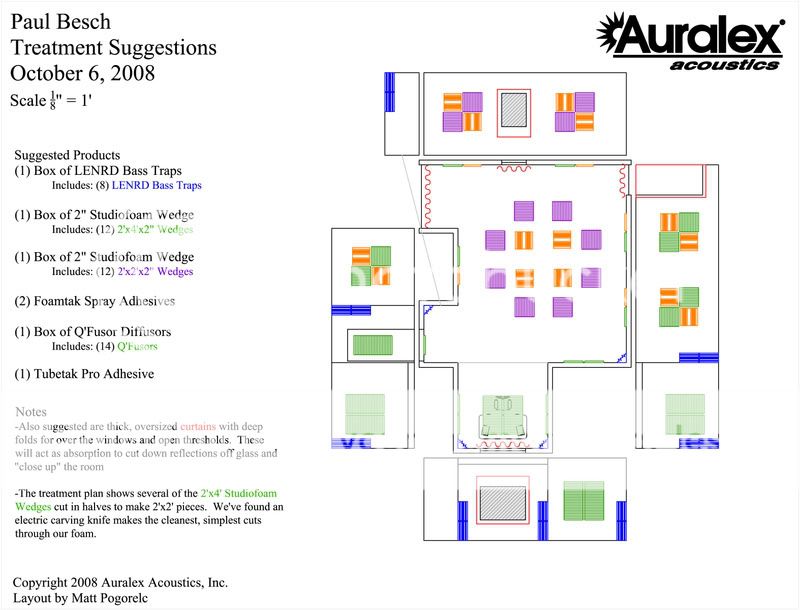My biggest turmoil right now is I have this recommendation from Auralex. A layout of my room with proper treatment all around the room. Coming here I really am amazed at how quick and helpful people are, but before deciding "hey im going to start building my own sound control" i need a reason to avoid auralex. I have read the links posted earlier, very good information, and what i generally gathered was that foam doesnt compare to rockwool, owens 703, etc.
NOW, i know this is going to get opposed as soon as i say, but im not here to be an architect, a personal contractor, or to learn everything there is to know about how to control sound response in a room.
I want to spend about $2k on a pretty good sized room i have, to make demos (rock/alternative music) for my band to shop. I like the idea of making my own panels but my biggest concerns are
1. will they be as effective as auralex?
2. how much less will it cost to achieve the same results as auralex? (the recommended treatment is about $1000)
3. im a virgin when it comes to power tools so building ANYTHING will be a feat within itself
Without telling me to read something where the answer to my question might be cryptically held within, what are the answers i need? thanks, and sorry if i come off a little impatient or demanding, i really dont mean to








